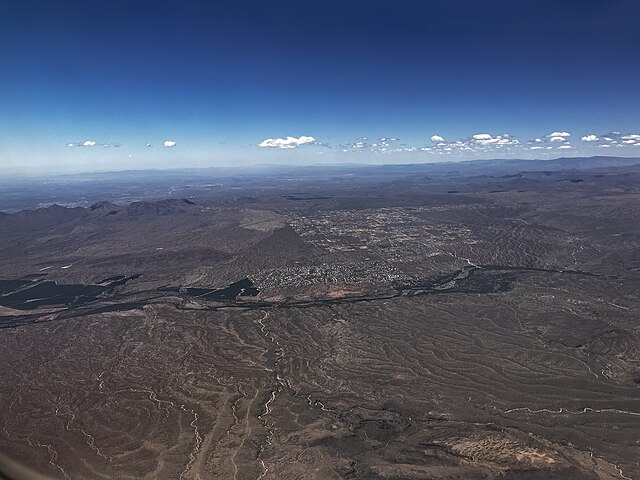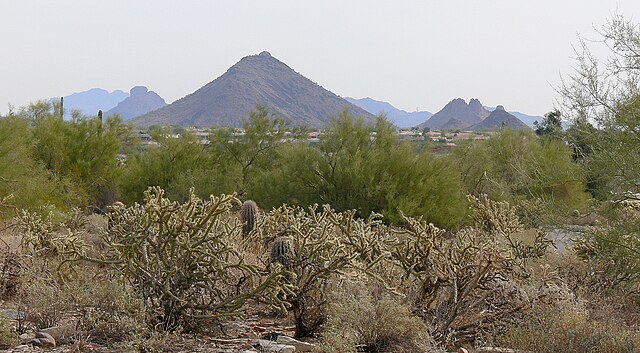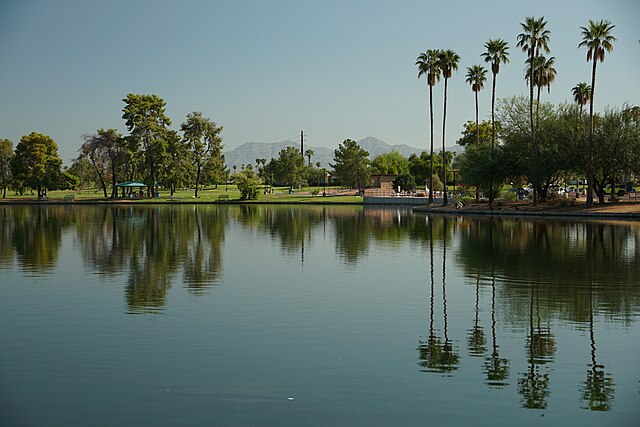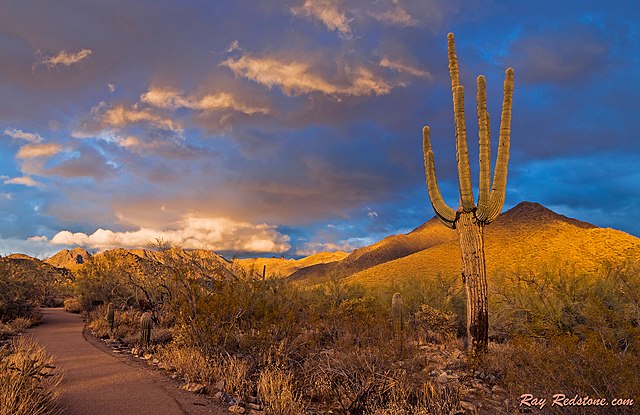Scottsdale, Arizona, stands as one of the most sought-after destinations in the American Southwest, and its weather plays a starring role in that appeal. Nestled in the heart of the Sonoran Desert, this vibrant city offers a climate that’s both challenging and rewarding, depending on when you visit and how well you prepare.
Whether you’re planning a vacation, considering a move, or simply curious about what makes Scottsdale’s weather so distinctive, you’ve come to the right place. This comprehensive guide will walk you through everything you need to know about Scottsdale’s climate patterns, seasonal variations, and how to make the most of each weather condition throughout the year.
Understanding Scottsdale’s Desert Climate
What Makes Scottsdale’s Weather Unique?
Scottsdale experiences what meteorologists classify as a hot desert climate, specifically falling under the Köppen climate classification BWh. This means you can expect hot, dry summers and mild, pleasant winters – a stark contrast to what many people experience in other parts of the United States.
The city sits at an elevation of approximately 1,257 feet above sea level, which provides just enough altitude to offer slightly cooler temperatures than lower desert areas while still maintaining that quintessential desert character. This elevation sweet spot means Scottsdale rarely experiences the extreme temperature variations you might find at higher elevations.
What truly sets Scottsdale apart is its remarkable consistency. While other regions deal with unpredictable weather patterns, Scottsdale offers reliability that borders on the extraordinary. You can plan outdoor activities months in advance with confidence, knowing that weather-related cancellations are rare exceptions rather than common occurrences.
The Sonoran Desert Influence
The Sonoran Desert doesn’t just surround Scottsdale – it defines it. This unique ecosystem creates weather patterns that you won’t find anywhere else in the world. The desert acts like a massive heat sink, absorbing solar energy during the day and releasing it slowly at night, which explains why summer evenings in Scottsdale remain warm long after sunset.
The sparse vegetation and lack of large water bodies mean there’s minimal natural cooling through evapotranspiration. Instead, the landscape focuses the sun’s energy, creating those famous Arizona temperatures that can soar well above 100°F during summer months.
But here’s where it gets interesting: the low humidity levels that accompany this heat make it feel quite different from humid climates. While 115°F might sound unbearable, the dry heat often feels more manageable than 85°F with high humidity in other parts of the country.
Scottsdale Weather by Season

Spring Weather in Scottsdale (March-May)
Spring in Scottsdale is nothing short of magical. As winter’s mild grip loosens, the desert awakens with a burst of color and comfortable temperatures that make you understand why people fall in love with Arizona.
March typically sees daytime highs ranging from the mid-70s to low 80s°F, with nighttime lows in the 50s. By April, you’re looking at highs in the 80s to low 90s, and May pushes into the mid-to-upper 90s. The progression is gradual enough that you can adapt naturally to the increasing warmth.
Perfect Outdoor Weather
This is the season when Scottsdale truly shines. The weather during spring creates perfect conditions for every outdoor activity imaginable. Golf courses are packed, hiking trails buzz with activity, and outdoor dining becomes a daily pleasure rather than a seasonal treat.
The desert landscape transforms during spring, with wildflowers blooming across the Sonoran Desert. Palo verde trees burst into brilliant yellow blooms, and if you’re lucky enough to experience a wet winter, the desert floor becomes a carpet of colorful wildflowers that attracts visitors from around the world.
Summer Weather in Scottsdale (June-August)
Summer in Scottsdale is when the desert shows its true character. This is the season that separates the desert lovers from the occasional visitors, and understanding how to navigate these months is crucial for anyone spending time in the area.
Daytime temperatures regularly soar above 100°F, with highs often reaching 115°F or higher during peak summer months. July typically claims the title of hottest month, with average highs around 106°F. But remember, these are averages – individual days can be significantly hotter.
Dealing with Extreme Heat
The key to surviving and even enjoying Scottsdale summers lies in adaptation and respect for the climate. Early morning hours, typically before 9 AM, offer the most comfortable conditions for outdoor activities. Many locals become creatures of the dawn, completing their outdoor exercise, dog walks, and garden work before the sun reaches its full intensity.
Evening activities become popular again after sunset, though temperatures often remain in the 90s well into the night. The concept of “thermal mass” becomes very real – everything from sidewalks to building walls absorbs heat during the day and radiates it back throughout the evening hours.
Monsoon Season Magic
Summer brings one of Scottsdale’s most dramatic weather phenomena: the North American Monsoon. Typically beginning in late June or early July and lasting through September, monsoon season transforms the weather landscape dramatically.
These storms roll in with impressive thunderheads that can tower 40,000 feet into the sky. The temperature drops can be dramatic – a 110°F afternoon might suddenly cool to the 80s as a monsoon storm approaches. The storms bring intense but brief rainfall, often accompanied by spectacular lightning displays that light up the desert sky.
Dust storms, known locally as “haboobs,” can precede these monsoon storms, creating walls of dust that can reach several thousand feet high and stretch for miles. While dramatic and sometimes concerning for newcomers, these are natural phenomena that locals have learned to navigate.
Fall Weather in Scottsdale (September-November)
Fall represents a gradual return to Scottsdale’s most pleasant weather conditions. September still carries summer’s heat, with highs typically in the upper 90s to low 100s, but by October, you’re back to the delightful 80s and 90s that make outdoor life so appealing.
November brings some of the year’s most perfect weather, with daytime highs in the 70s and 80s and nighttime lows that might require a light jacket for the first time since spring.
The Return of Pleasant Temperatures
This is when Scottsdale’s outdoor lifestyle fully resumes. Restaurant patios reopen, hiking becomes comfortable again, and the city’s numerous outdoor events begin to populate the calendar. The autumn months offer excellent conditions for exploring everything Scottsdale has to offer without the intensity of summer heat.
The desert landscape takes on a different character in fall. While you won’t see the dramatic color changes of deciduous forests, the desert has its own subtle autumn beauty. The light becomes softer, shadows grow longer, and the ever-present mountains that frame Scottsdale’s horizon seem to stand out more sharply against the clear autumn skies.
Winter Weather in Scottsdale (December-February)
Winter in Scottsdale is what draws millions of visitors and seasonal residents from colder climates. This is the season that built Scottsdale’s reputation as a winter paradise and continues to drive much of its tourism industry.
Daytime temperatures typically range from the mid-60s to mid-70s°F, with abundant sunshine that makes even cooler days feel warm and inviting. Nighttime temperatures can drop into the 40s, and occasionally even the upper 30s, making for crisp, clear evenings perfect for outdoor fires and stargazing.
Mild Winter Paradise
The term “winter” feels almost inappropriate when describing Scottsdale’s coldest season. While other parts of the country deal with snow, ice, and sub-freezing temperatures, Scottsdale residents and visitors enjoy golf, tennis, hiking, and outdoor dining throughout the winter months.
Rainfall is minimal but more frequent than in summer, typically occurring as gentle, steady precipitation rather than the dramatic downpours of monsoon season. These winter rains are crucial for the desert ecosystem and often bring temporary relief from the persistent sunshine.
Monthly Weather Breakdown

Temperature Patterns Throughout the Year
Understanding Scottsdale’s monthly temperature patterns helps with everything from vacation planning to wardrobe decisions. January and February offer the coolest temperatures, with average highs in the upper 60s to low 70s. March begins the steady climb, reaching the low 80s.
April and May see rapid warming, with May often reaching the mid-90s. June marks the beginning of serious heat, typically hitting 100°F, while July and August represent peak heat with averages above 105°F. September remains hot but begins the gradual descent, while October and November offer increasingly pleasant conditions before the cycle begins again.
The diurnal temperature range – the difference between daily highs and lows – remains significant throughout the year due to the dry climate. Even in summer, nighttime temperatures might drop 20-30 degrees from daytime highs, though they rarely become truly cool.
Precipitation and Rainfall
Scottsdale receives approximately 9-10 inches of rainfall annually, making it one of the drier climates in the United States. This precipitation follows a distinct bi-modal pattern, with peaks during winter months (December-March) and monsoon season (July-September).
Winter precipitation typically comes from Pacific storm systems and tends to be gentle and steady. Monsoon precipitation is dramatically different – intense, brief thunderstorms that can drop an inch or more of rain in a matter of hours, often accompanied by flash flooding in washes and low-lying areas.
The months of April, May, and June are typically the driest, with some years seeing virtually no measurable precipitation during this period. This dry period helps explain why late spring and early summer feel so intensely hot – there’s no moisture in the air to provide even minimal cooling relief.
Best Times to Visit Scottsdale
Peak Tourist Season
Scottsdale’s peak tourist season runs from roughly November through April, coinciding with the most pleasant weather conditions. During these months, you’ll find the highest hotel rates, the busiest restaurants, and the most crowded attractions, but you’ll also experience the weather that makes Scottsdale famous.
December through March represents the absolute peak, when “snowbirds” – seasonal residents from colder climates – swell the population and create a vibrant, energetic atmosphere throughout the city. This is when Scottsdale’s outdoor lifestyle is on full display, with perfect conditions for every activity imaginable.
Off-Season Benefits
The summer months, while challenging weather-wise, offer their own unique benefits for those willing to adapt. Hotel rates drop dramatically, restaurants are less crowded, and you’ll experience a more authentic local atmosphere as the tourist crowds thin out.
Many locals consider late September through early November to be Scottsdale’s secret season – still warm enough for pool activities and outdoor dining, but with fewer crowds and lower prices than peak season. The monsoon storms of late summer add drama and beauty to the landscape that many visitors never experience.
Weather-Related Activities and Planning
Outdoor Recreation by Season
Scottsdale’s year-round outdoor recreation opportunities require different approaches depending on the season. Winter and spring offer ideal conditions for hiking, with popular trails like Camelback Mountain and the McDowell Mountain Sonoran Preserve providing excellent adventures in comfortable temperatures.
Summer shifts the focus to early morning and evening activities. Many golf courses offer deeply discounted rates during summer months, and swimming becomes less recreation and more necessity. The numerous resorts and hotels with elaborate pool complexes see their highest usage during the hot months.
Fall provides a transition period when both summer and winter activities remain viable. This flexibility makes autumn an excellent time for visitors who want to experience multiple aspects of Scottsdale’s outdoor offerings.
What to Pack for Each Season
Packing for Scottsdale requires understanding the significant temperature variations between seasons and even within individual days. Winter visitors should bring layers – shorts and t-shirts for sunny afternoons, but also sweaters or light jackets for evening dining or early morning activities.
Summer packing focuses on sun protection and cooling. Light-colored, loose-fitting clothing, wide-brimmed hats, and high-SPF sunscreen become essential. Don’t forget that air conditioning can be aggressive indoors, so a light sweater for restaurants and shopping centers is always wise.
Spring and fall offer the most forgiving packing requirements, though spring visitors should be prepared for rapidly changing conditions as the season progresses from pleasant to quite warm.
Extreme Weather Events

Heat Waves and Safety
Scottsdale’s extreme heat demands respect and preparation. Heat-related illnesses become genuine concerns when temperatures exceed 110°F, particularly for visitors unaccustomed to desert conditions. Understanding the signs of heat exhaustion and heat stroke could literally save your life or someone else’s.
The dry heat can be deceptive – you may not realize how much you’re sweating because it evaporates so quickly. This rapid moisture loss can lead to dehydration faster than many people expect. Carrying water becomes not just advisable but essential during summer months.
Dust Storms (Haboobs)
Dust storms represent one of Scottsdale’s most dramatic weather phenomena. These massive walls of dust, sometimes reaching heights of several thousand feet, can reduce visibility to near zero and create hazardous driving conditions. Understanding when they’re likely to occur – typically preceding monsoon storms – and how to respond safely is crucial for residents and visitors alike.
The key to dust storm safety is simple: “Pull Aside, Stay Alive.” If you encounter a dust storm while driving, pull completely off the road, turn off your lights to avoid confusing other drivers, and wait for it to pass. These storms typically move through quickly, but attempting to drive through them can be deadly.
Climate Change and Future Trends
Scottsdale’s climate is experiencing gradual changes consistent with broader climate trends across the American Southwest. Average temperatures have risen slightly over the past several decades, and the timing of seasonal patterns shows some variation from historical norms.
Monsoon patterns appear to be shifting, with some years showing delayed onset or altered intensity patterns. Winter precipitation patterns also show variability, with some years significantly drier or wetter than historical averages.
These changes don’t dramatically alter Scottsdale’s fundamental character as a hot, dry desert climate, but they do suggest that flexibility and adaptation will remain important for residents and frequent visitors.
Living with Scottsdale Weather
Local Tips for Weather Adaptation
Long-time Scottsdale residents have developed numerous strategies for thriving in the desert climate. Many embrace the “desert schedule” – early morning outdoor activities, indoor midday hours during summer, and evening outdoor time. This rhythm becomes natural and actually provides a unique lifestyle that many find preferable to more traditional schedules.
Hydration becomes a way of life rather than just a health recommendation. Locals carry water constantly, drink more than they think they need, and pay attention to their body’s signals. Electrolyte replacement also becomes important, particularly during summer months when sweating increases dramatically.
Home and landscape adaptations reflect the climate reality. Desert landscaping reduces water usage while creating beautiful, appropriate outdoor spaces. Home design focuses on shade, thermal mass, and efficient cooling systems that can handle extreme temperatures while maintaining comfort.
Conclusion
Scottsdale’s weather represents both challenge and opportunity, depending on your perspective and preparation. The desert climate that defines this remarkable city offers consistency and beauty that attracts millions of visitors and residents who’ve learned to work with rather than against the natural patterns.
Understanding Scottsdale’s weather means appreciating its extremes – the intense summer heat that tests your adaptability, the perfect spring and fall conditions that make outdoor living irresistible, and the mild winters that provide relief from harsher climates elsewhere. Each season offers its own rewards for those who approach it with knowledge and respect.
Whether you’re planning a visit, considering a move, or simply satisfying your curiosity about one of America’s premier desert destinations, remember that Scottsdale’s weather is not just a backdrop – it’s an integral part of the experience that shapes everything from daily routines to long-term lifestyle choices. Embrace it, prepare for it, and let it enhance rather than limit your Arizona adventure.
FAQs
Q: What is the hottest month in Scottsdale, Arizona?
A: July typically ranks as Scottsdale’s hottest month, with average high temperatures around 106°F. However, individual days in June, July, August, and early September can all reach 115°F or higher, so the entire summer period represents peak heat conditions.
Q: Does Scottsdale get monsoon storms, and when do they occur?
A: Yes, Scottsdale experiences the North American Monsoon, typically running from late June through September. These storms bring dramatic thunderheads, intense but brief rainfall, spectacular lightning, and sometimes dust storms called haboobs that precede the rain.
Q: What’s the best time of year to visit Scottsdale for outdoor activities?
A: The ideal time for outdoor activities in Scottsdale is November through April, with March and April offering particularly perfect conditions. Late September through early November also provides excellent weather with fewer crowds and lower prices.
Q: How much does it rain in Scottsdale annually?
A: Scottsdale receives approximately 9-10 inches of rainfall per year, following a bi-modal pattern with peaks during winter months (December-March) and monsoon season (July-September). April, May, and June are typically the driest months.
Q: Is Scottsdale’s summer heat really as bad as people say?
A: Summer heat in Scottsdale is intense, with temperatures regularly exceeding 100°F and often reaching 115°F or higher. However, the dry heat feels different from humid heat, and with proper preparation, hydration, and timing of activities, many people successfully adapt to and even enjoy the summer months.

